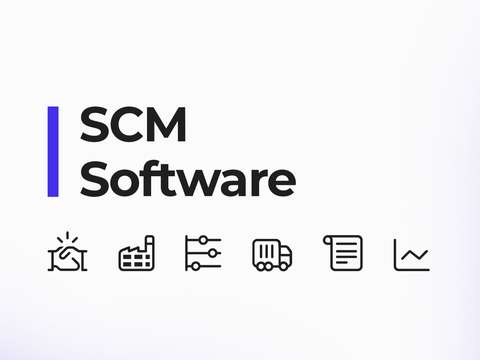One of the most important practices in a help desk is to analyze its metrics and KPIs. This will help us maintain a more orderly and efficient work system.
What are the most important KPIs or metrics? If we look at the numbers, 48% of teams use satisfaction surveys, while 39% rely on ticket resolution statistics.
However, every business is unique and has its own processes. In this article, we analyze metrics and KPIs that are essential for measuring help desk performance.
What are help desk metrics?
Help desk metrics are numerical or percentage representations of a company's support service performance. They are the statistics of the customer service tool's dashboard itself. Tracking them is very useful for identifying areas for improvement, monitoring the progress over time, and detecting trends.
A very important point to keep in mind is the selection of software. If you want to analyze and collect useful metrics for your business, you should integrate a help desk specialized in your sector.
Recomended to read
Discover the intricacies of customer service in eCommerce through our comprehensive guide. Uncover industry challenges and strategies to enhance online store retention.
The 10 most important metrics and KPIs for help desks
As we mentioned, there are many metrics and KPIs depending on the business model, but there are also other common ones that you should know and measure from the very beginning.
1. Time to first response
This metric measures the time from when a customer makes an inquiry until the first response is received. According to Hubspot, 90% of users consider response time an indicator of customer service quality. A quick response not only reassures the customer and minimizes uncertainty, but it also reflects the brand's personality.
- First response time = (Agent response time - Ticket creation time)
- The average time in 2023 was 4 hours and 42 minutes
The best practice to reduce first response time is to use mapping rules and notify agents whenever they have a query.
2. Resolution time
Resolution time measures how long it takes the team to resolve a customer's problem from the time the query is initiated. This help desk metric is crucial for evaluating internal efficiency and customer service quality. It includes active work time, waiting periods, escalations, investigations, and any other processes related to resolution.
- Resolution time = (Ticket closure time - Ticket creation time)
- According to Klausapp, the average time in 2023 ranged from 4.45 minutes to 8.7 minutes.
The best practice for reducing resolution times is to invest in automated customer service.
3. Volume of incoming queries
Provides information on the number of support requests received by the team in a specific period. It is essential for understanding the team's workload and for strategic planning. It can also be useful for assessing the impact of business changes, such as new product or service launches, marketing campaigns, or special events.
- Average Ticket Volume = Total Number of Tickets / Time Period
- Studies indicate that the industry average is 578 tickets per day and 17,630 per month
Discover the best practices to ensure effective management of inquiries within your help desk.
4. First contact resolution rate
This KPI evaluates the help desk's ability to resolve customer queries at the first interaction. It is a highly valued metric. According to research conducted by the SQM Group, it has been shown that being able to achieve first contact resolution can improve the CSAT metric by 47%.
- First contact resolution rate = (Tickets resolved at first contact / Total number of tickets) x 100
- A good rate for this metric should be between 70% and 79%.
Automating answers to the most common questions is a really effective practice to improve the first contact resolution rate.
5. Agent utilization rate
Agent utilization rate measures the percentage of time an agent spends solving tickets compared to their total workload. It is a metric specifically designed to evaluate the proactivity of help desk workers. For example, if an agent spends 6 hours out of an 8-hour workday on support-related activities, their utilization rate is 75%.
- Agent utilization rate = (Agent work time spent on tickets / Total agent work time) x 100
- The industry average rate is 48%.
Help desk functionalities are crucial for increasing the productivity of support agents
6. Transfer rate
This indicator indicates the percentage of queries that must be redirected from the initial agent to another agent or team before the problem is resolved. High transfer rates are clear signs of possible inefficiencies, such as poorly trained agents or unclear routing policies. It is critical to address and reduce these rates to ensure an optimal and satisfactory customer service experience.
- Transfer rate = (Number of tickets transferred / Total number of tickets) x 100
- The industry standard is 19%.
Create teams of expert agents for handling the most complex queries and use assignment rules to redirect queries automatically.
7. Customer satisfaction rating (CSAT)
The Customer Satisfaction Index (CSAT) provides a quantitative measure of customer satisfaction with the service received. It is the most effective metric for measuring user satisfaction. According to HubSpot, it continues to be the most monitored KPI for 75% of leaders in the field of customer service.
To calculate CSAT, you should conduct a customer satisfaction survey. Then, divide the number of satisfied or very satisfied customers by the total number of responses, or divide the sum of all ratings by the number of respondents.
- CSAT = (Number of satisfied customers / Total number of customers) x 100
- The average rate in eCommerce is around 80%
Discover the benefits of good customer service for your business.
8. Expected delays
This metric measures the total number of unresolved tickets in a specific period. It is important for identifying potential delays and ensuring that issues are addressed in a timely manner. Additionally, forecasting delays will also help you comply with the terms of your SLA agreement.
- The only way to calculate expected backlog is to have a history that helps us identify trends.
- Monthly volumes should be between 0.1% and 7.6%, depending on ticket priority.
Send notifications to your agents when they are nearing negative resolution numbers. This will help minimize inefficiency time
9. Net Promoter Score (NPS)
This metric focuses on the likelihood that customers will recommend a service to others, making it a key indicator of overall brand perception. It is important because it provides a clear and quantifiable measure of customer loyalty.
NPS is calculated by subtracting the percentage of customers who rate your business negatively from those who rate it positively. Detractor customers are those who rate the service with a low score (generally from 0 to 6), while promoters are those who rate the service with a high score (generally from 9 to 10).
- NPS = (% of promoters - % of detractors)
- The average NPS in eCommerce is 50%
You can send satisfaction surveys on help desk feedback to evaluate the NPS index of your business.
10. Carrier incidence rate
This is an exclusive metric of help desks specialized in eCommerce. It helps to monitor the performance level of carriers. The delivery experience is vital to the satisfaction of online shoppers. This metric helps determine if our carrier is making too many mistakes, such as delays or lost items. It is highly recommended to monitor this type of information and take action if we notice an increase in complaints.
- Only eCommerce help desks, such as Outvio, offer this type of metrics
- 95% of customers want shipping issues to be resolved during the order's journey
Outvio has a shipping incident dashboard and an automated messaging system that can resolve common delivery issues immediately.
How to use help desk metrics: examples and real-life practices
Example 1 - Improving response time
The goal is to optimize the speed with which your team handles customer requests, resulting in a better customer experience and more efficient management. To measure progress, you should focus on two key metrics: the average time from receipt of a request to the first response and the percentage of requests handled within a specific timeframe, such as 24 hours.
Once you have identified the key metrics within the help desk, it is essential to investigate processes, agents, or channels that may be inefficient. Then, you need to identify the root problem: high workload, inefficient processes, or understaffing?
After the analysis, you could take some of the following actions:
- Redistribute tasks evenly among all your teams and agents
- Automate responses to frequently asked questions
- Conduct staff training to increase their productivity
Example 2 - Optimizing agent efficiency
We aim to maximize the productivity of the help desk staff, ensuring cost-effective management. To achieve this, the first step is to assess which agents are performing well or poorly using metrics such as agent utilization rate and number of tickets resolved per agent.
After identifying agents with poor KPIs, we need to prioritize specific actions within the help desk. The next step is to understand the specific reasons for an agent's underperformance and take appropriate action:
- If it's due to lack of capacity, offer training sessions
- If it's due to lack of technology, integrate new automation functionalities
- If it's due to lack of communication, create escalation or ticket rotation guides
- If it's due to a constant backlog, consider hiring more agents
Example 3 - Reducing delivery times of an online store
Delivery delays significantly impact the eCommerce customer experience. An online store can utilize Outvio metrics to mitigate these delays.
First, access the metrics for delays or the most returned products. Then, identify the reason for the returns or the incidence rate of the carrier responsible for delivery. This information will help understand the cause of the delays.
Some actions you can take include:
- Activating automatic resolution of shipping incidents for transport delays.
- Scheduling the use of an alternative carrier for specific routes experiencing problems.
- Connecting the portal with automatic responses to address an increase in returns and offer higher-quality solutions.
Tips for reporting help desk KPIs and statistics
Focus on the metrics that really matter
When selecting KPIs for your business and department, be sure to choose those that are most relevant and meaningful. Set specific and measurable targets for each metric, ensuring that they are achievable and relevant to your organization. It is important to regularly monitor these metrics and adjust targets as needed
Converts data into actions and filters information
Analyzes the average waiting time on different communication channels and adjusts resource allocation according to identified demand peaks. Classifies incidents by type, category, and complexity to identify the underlying causes of problems and develop permanent solutions for recurring problems.
Explain the reasons behind the help desk metrics
Clearly communicate what the metrics mean and how they are calculated, comparing them to established objectives and historical data. Describe trends and patterns observed in the data, proposing concrete actions to improve help desk performance. Justify your recommendations with solid data and analysis, and present a clear action plan for implementation.
Benchmarking and Comparative Analysis
Seek information on the help desk metrics of similar companies and participate in benchmarking studies to compare your performance with that of other organizations. Consult reports and analyses from industry experts to gain a broader perspective. Research how other companies are improving their help desk performance and tailor strategies to your company's specific needs.
Conclusion
You have taken the crucial first step in optimizing your business by understanding help desk metrics and their importance. Now it's time to turn this knowledge into tangible actions that drive efficiency, customer satisfaction, and overall success.
To put what you've learned into practice, you must implement robust help desk software that is specialized for your business sector, ensuring that it offers the necessary functionality to collect, analyze, and manage relevant metrics. Remember that the success of help desk metrics analysis depends on continuous action and adjustments to the strategy as needed.




